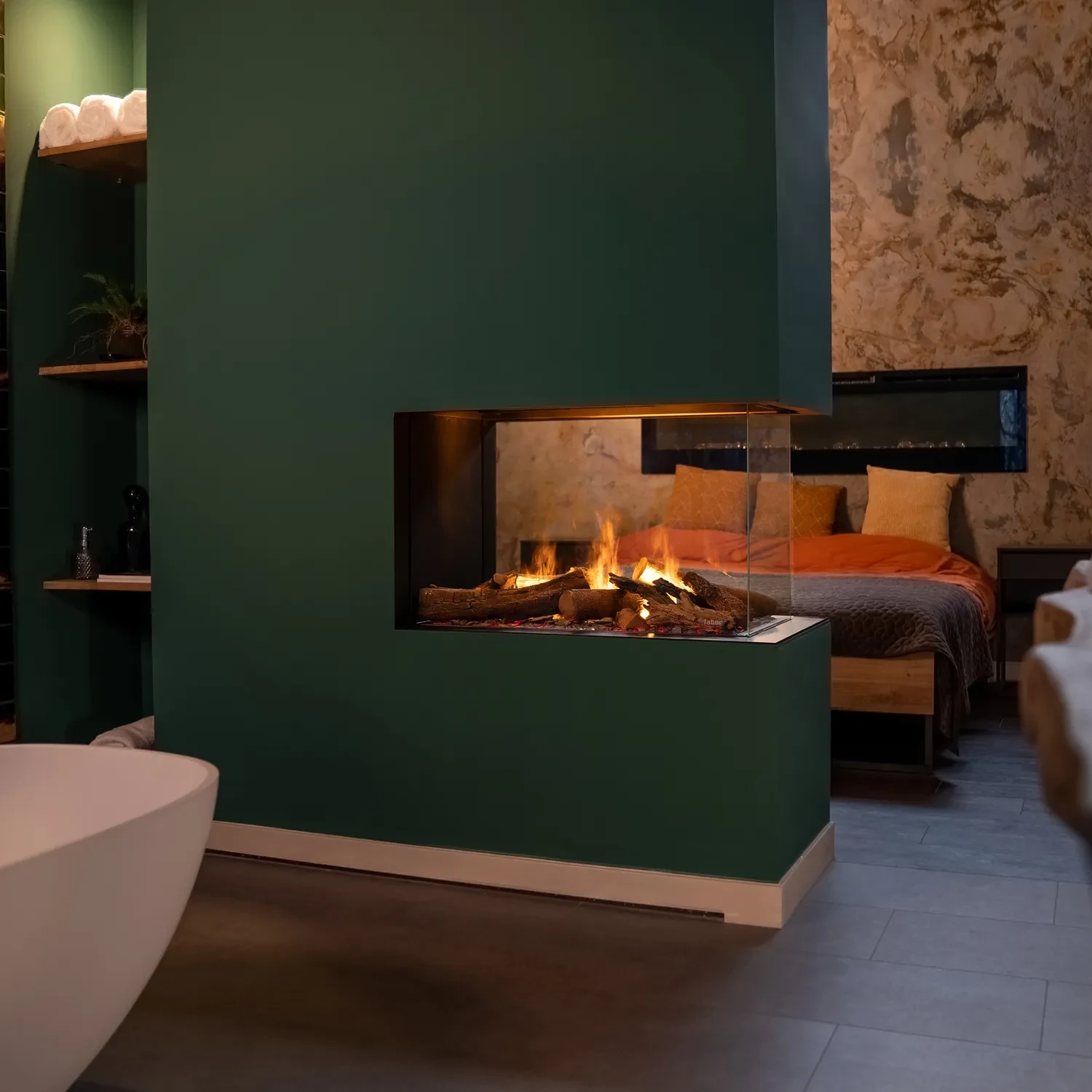Replacing a Gas Fireplace with an Electric Fireplace
Why Replace a Gas Fire with Electric?
Switching from gas to electric heating provides several benefits:
-
Improved Safety: Electric fires eliminate risks associated with gas leaks and carbon monoxide poisoning. They also offer cool-touch surfaces and automatic shut-off features for added peace of mind.
-
Better Energy Efficiency: Electric fireplaces convert nearly 100% of their energy into heat, compared to gas fires which lose energy through flues and vents.
-
Lower Maintenance: Unlike gas fires that require annual safety inspections and servicing, electric fires need minimal upkeep.
-
Instant Heat and Control: Electric fires provide immediate warmth and often come with remote controls or smart home integration for precise temperature and flame effect adjustments.
-
No Chimney or Vent Required: Electric fireplaces don’t need a chimney or flue, simplifying installation and improving room insulation.
_54349.webp)
How to Replace a Gas Fireplace with Electric
_43674.jpg)
Step 1: Professional Gas Disconnection
The most critical and legally regulated step is safely disconnecting your gas fire. Only a Gas Safe registered engineer can perform this task. They will:
-
Shut off the gas supply and disconnect the appliance.
-
Permanently cap the gas line at the fireplace connection point.
-
Conduct safety tests to ensure no gas leaks remain.
-
Provide a Gas Safe certificate for your records.
Step 2: Sealing the Fireplace Vent and Chimney
Step 3: Choosing the Right Electric Fireplace
When selecting a new electric fireplace, consider:
-
Size and Fit: Measure your existing fireplace opening to choose an inset electric fire that fits perfectly. Freestanding or wall-mounted electric fires offer alternatives if the opening is non-standard.
-
Heat Output: Most electric fires provide between 1kW and 3kW of heat, suitable for rooms up to 25 square meters.
-
Style and Features: Choose from flame effect, coal, or log designs. Look for models with remote control, adjustable flame brightness, and smart home compatibility for convenience.
-
Efficiency and Safety: Modern electric fires offer overheat protection and child safety locks.

Step 4: Electric Fireplace Installation
Most electric fires plug into standard 13-amp sockets, making installation straightforward. However, if no suitable outlet exists near your fireplace, a qualified electrician should install a dedicated power supply. Avoid using extension leads for safety reasons.
Professional installation is recommended to ensure compliance with UK Building Regulations Part P and to maintain warranty coverage. Installation time typically ranges from 1 to 4 hours depending on the complexity.
Conclusion
Replacing your gas fire with an electric fireplace is a practical, safe, and energy-efficient choice. With professional gas disconnection, proper sealing, and careful selection of your new electric fire, you can enjoy instant warmth, lower maintenance, and modern features that enhance your living space. Consider your room size, heating needs, and style preferences to find the perfect electric fireplace that suits your home and lifestyle.
